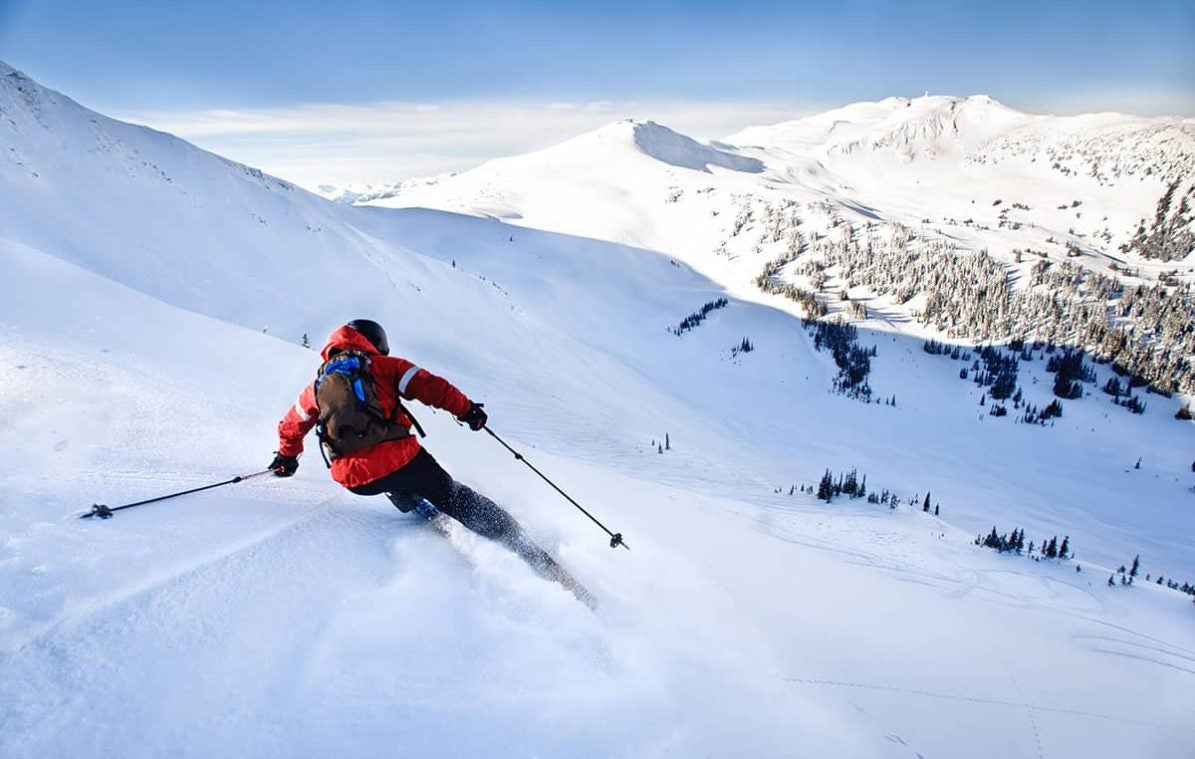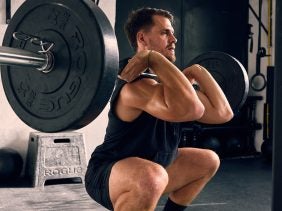How to Get Fit for Winter Sports
 © foodspring
© foodspring
Whether the best thing about the cold season is the winter sports or the mulled wine afterwards is debatable – let’s just admit that we look forward to both. Before you head to the mountains to ski or snowboard, hit the ice with your skates, or pack your backpack for a hike in the hills, you should make sure your muscles are ready for the challenge.
To help you improve in your favorite winter sport, we’ve put together an intense full-body workout you can do 3-4 times a week before heading to the mountains. A strong torso is vital for your upper and lower body to function as a strong single unit as efficiently as possible. You’ll also need stability in your knees and hips, and don’t underestimate how much endurance you’ll need for a ski run, a lap of the ice rink, or the après ski party. Add in a HIIT session at the end of your strength training sessions, or one or two separate cardio sessions per week to make sure you’re ready.
Depending on the sport, it makes sense to add other isolated exercises to your workout for increased joint strength and stability. Functional training is designed to help you improve in specific sports and gym trainers will be happy to help you get into the details.
Warm-Up
Before starting your workout, you should spend 10-15 minutes warming up to stimulate your cardiovascular system, improve the supply of oxygen and nutrients to your muscles, and prepare your joints and ligaments with a targeted mobility session. This mobility session will prepare your lower body and spine in the best way possible, and you can add in a short stint on the treadmill or rowing machine. Jumping jacks, air squats and light mountain climbers will also get you nicely warmed up.
The Exercises
- Lunges
Place a barbell in the rack and stand underneath it so that it rests on your trapezoid muscles at your neck. Lift the bar out of the rack and take a small step backwards. Space your feet shoulder-width apart, keep your ankle and knee joints active and point them slightly outwards. With full body tension, place your right foot behind you with your toes pointing forward. Now lower the knee of your back leg towards the ground until you reach roughly a 90 degree angle. Then push yourself back up. This shifts your weight to the front leg. Carry out all the repetitions and then switch sides.
Muscles: Thighs, buttocks, core.
Note: Don’t place your foot too far back to avoid becoming unstable.
- Bent Over Row
Stand with your feet hip-width apart and hold a medium to heavy dumbbell in each hand. Choose your weight according to your fitness level. Align your upper body as parallel to the floor as possible, with your knees bent and your back straight and active. Raise the dumbbells up to your chest, keeping your elbows close to your body.
Muscles: Torso, back
Note: Since the following exercise also works your lower back, you can also replace the bent over rows with a standing row on a cable pulley or machine if you need to take the strain off your lower back.
- Standing scales
You can do this exercise with dumbbells, kettlebells or just with your bodyweight. While standing straight, shift your weight to your right leg and then align your upper body parallel to the floor by bending your hips and extending your left leg backwards. Point your feet to the ground, pull your shoulder blades back together and form a straight line with your body from head to heel. Return to the starting position and carry out the repetitions first on one side, then the other.
Muscles: Hips, hamstrings, buttocks, spinal erectors
Note: when using weights, pay extra attention to any tension in your back so that the weights don’t pull you downwards toward the ground and make you round your back.
- Plank Pass Through
Come into a high plank position. Place your palms directly under your shoulders. Place a light to medium kettlebell to your left, slightly further down than the palm of your hand. Keeping your back as flat as possible, reach your right arm under your body, grasp the kettlebell and carry it under you towards your right side. Put your right palm back down and repeat with your left arm. Move the kettlebell back and forth in this manner.
Muscles: Core, arms, shoulders
Note: Keep your core stable and try not to tilt your hips to the left and right.
- Suitcase Carry
Pick up a heavy kettlebell and stand up straight. You’ll notice that you need to use a lot of body tension so that the weight doesn’t pull you to one side. Draw your shoulder blades down towards your tailbone, look straight ahead and walk around with the weight. Switch sides and repeat.
Muscles: Core, especially quadratus lumborum muscles and the lateral abdominal muscles.
Note: Use a timer or set a distance while you do this exercise, e.g. from one side of the gym to the other, and switch sides with the weight on the way back.
HIIT Finisher
To help you keep going when you’re out on the slopes, you should focus on both strength and endurance. With this in mind, let off some steam at the end of your workout with a short HIIT finisher. For example:
| Exercises | Duration | Rest |
| Mountain Climbers | 40 | 20 |
| Air Squats (or Squat Jumps) | 40 | 20 |
| Burpees | 40 | 20 |
You can also do sprints on the treadmill or do some skipping. What’s most important is that you enjoy yourself, so that you keep exercising like this at least 3 times a week.
More interesting articles from foodspring:
- 9 Simple Ways to Energize Your Days This Winter
- 8 Tried-and-True Motivational Tools to Make it Through Winter
Sources for this article
We at foodspring use only high-quality sources, including peer-reviewed studies, to support the facts within our articles. Read our editorial policy to learn more about how we fact-check and keep our content accurate, reliable, and trustworthy.

































